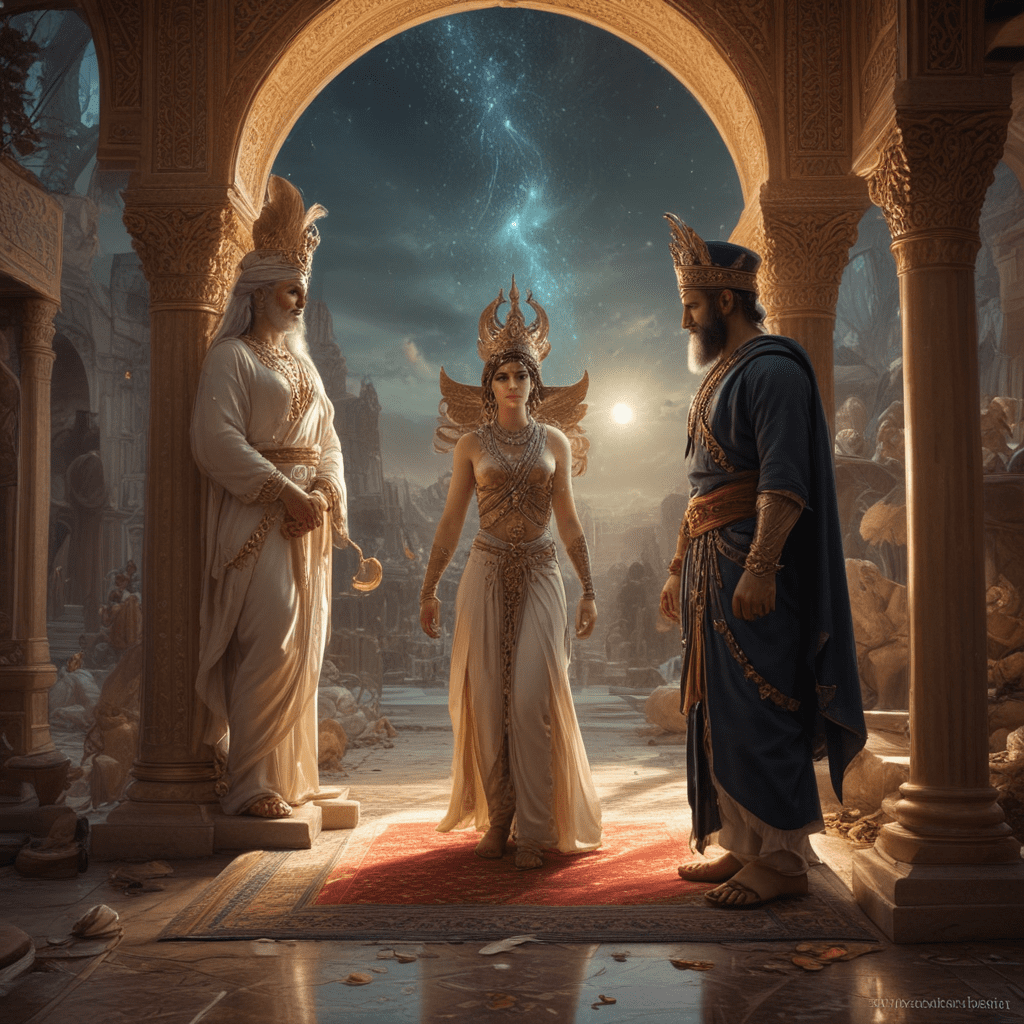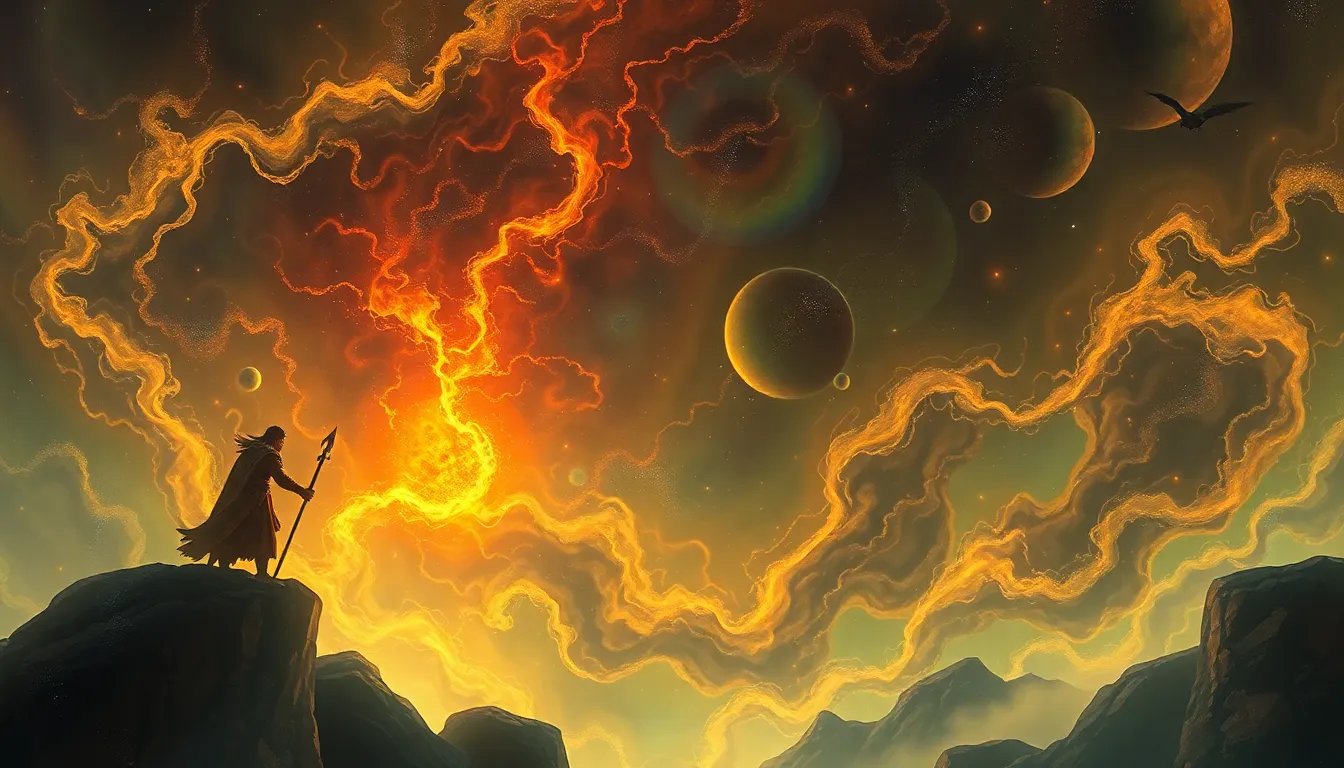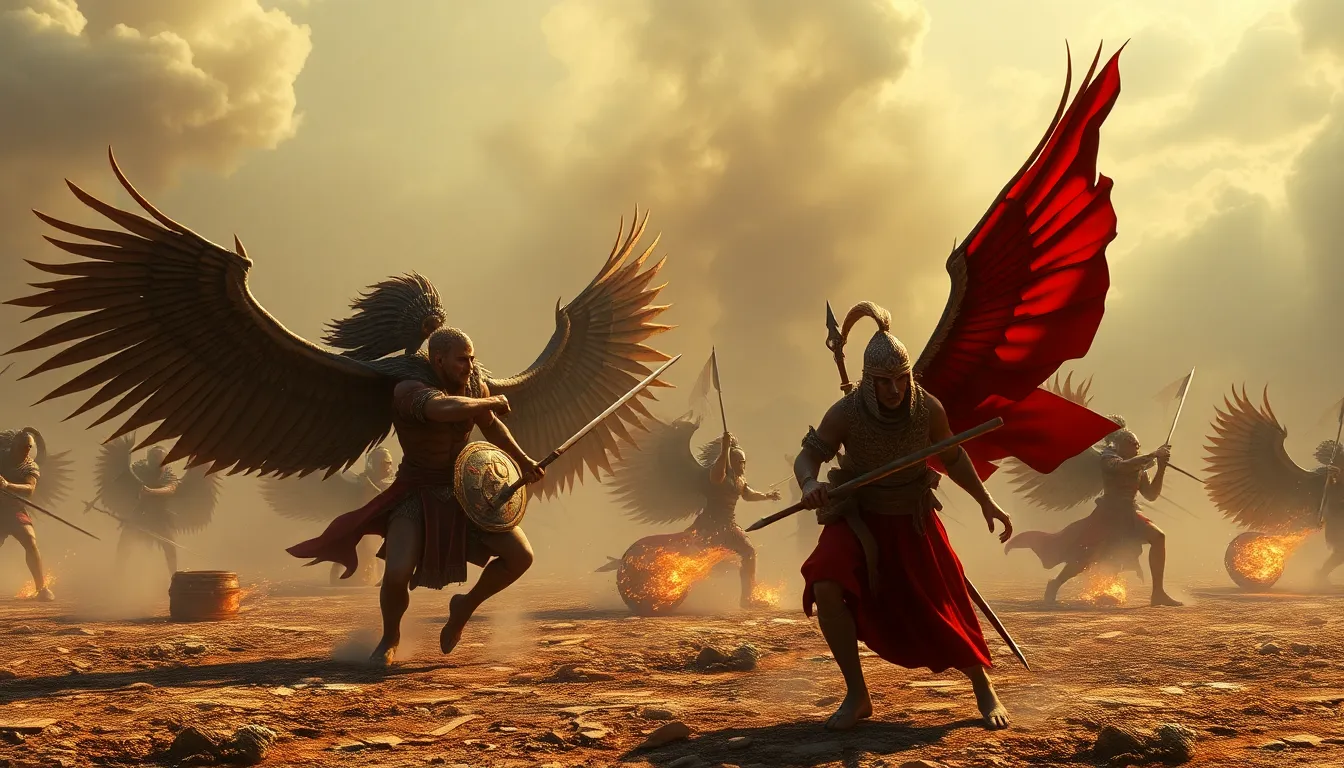The Concept of Good and Evil in Persian Mythology
1. Introduction
The epic tales and rich mythology of ancient Persia have captivated imaginations for centuries, offering profound insights into the human condition. At the heart of these narratives lies a compelling exploration of the fundamental struggle between good and evil, a conflict that shapes the destinies of gods, heroes, and mortals alike. Understanding this concept is crucial for appreciating the larger framework of Persian mythology, as it underpins the values, beliefs, and moral dilemmas that drive the stories.
2. Dualism: The Foundation of Good and Evil
Central to the Persian worldview is the concept of dualism, a belief system that posits the existence of two opposing forces: Ahura Mazda, the wise lord and embodiment of good, and Angra Mainyu, the destructive spirit and personification of evil. This dichotomy permeates Zoroastrianism, the ancient religion of Persia, shaping its cosmology, ethics, and eschatology. The constant struggle between these two forces forms the narrative backbone of countless myths and legends, reflecting the inherent tension between light and darkness that permeates human existence.
3. Ahura Mazda and the Forces of Good
Ahura Mazda, the benevolent creator god, reigns supreme in the realm of good. He is often depicted as a wise and just figure, associated with light, truth, and order. He represents the highest ideal of righteousness and is the ultimate source of all that is good in the world. His power is manifested through the Yazatas, benevolent spirits or angels who serve as his agents in the fight against evil. These include Mithra, the god of light and justice; Anahita, the goddess of water and fertility; and Sraosha, the angel of obedience and piety. The concepts of Asha (truth) and Vohu Mana (good thought) represent the essential principles of goodness, guiding individuals towards righteous action and a life of virtue.
4. Angra Mainyu and the Forces of Evil
In stark contrast to Ahura Mazda stands Angra Mainyu, the embodiment of evil and the antithesis of everything good. His origins lie in the realm of darkness and chaos, where he represents destruction, falsehood, and disorder. He is often depicted as a malevolent figure, associated with darkness, lies, and disease. His power is manifested through the Daevas, demonic beings who serve as his instruments of chaos. These include Aeshma, the demon of wrath and violence; Druj, the demon of falsehood and deceit; and Akomanah, the demon of evil thought. The concepts of Druj (falsehood) and Aka Manah (evil thought) represent the manifestations of evil, leading individuals towards darkness and corruption.
5. The Cosmic Battle Between Good and Evil
The conflict between Ahura Mazda and Angra Mainyu unfolds as an epic cosmic battle that plays out across the fabric of existence. This struggle manifests not only in the celestial realm but also in the hearts and minds of human beings. Every choice, every action, becomes a part of this grand conflict. Ahura Mazda's forces seek to establish a world of truth, justice, and harmony, while Angra Mainyu strives to spread darkness, deception, and suffering. The outcome of this battle remains perpetually in suspense, with both sides vying for supremacy.
The Zoroastrian concept of free will plays a crucial role in this cosmic drama. Human beings are not merely passive spectators but active participants in the struggle between good and evil. Our thoughts, words, and deeds tip the scales towards one side or the other. By choosing the path of righteousness and aligning ourselves with Ahura Mazda, we contribute to the ultimate triumph of good. Conversely, succumbing to temptation and engaging in evil actions empowers Angra Mainyu and his forces of darkness.
6. Frashokereti: The Final Victory of Good
Despite the ongoing struggle, Zoroastrian eschatology promises the inevitable victory of good over evil. This ultimate triumph is known as Frashokereti, a state of ultimate perfection where darkness and evil are vanquished, and the world is restored to its pristine state. In this new era, suffering and death cease to exist, and all creation rejoices in harmony and bliss. Frashokereti represents not just a distant hope but also a call to action, urging individuals to actively work towards creating a better world and hasten the arrival of this golden age.
7. Good and Evil in Persian Epic Literature
The themes of good and evil permeate Persian epic literature, serving as the driving forces within captivating narratives that have enchanted audiences for generations. In the Shahnameh, the national epic of Persia, heroes like Rostam and Sohrab embody the virtues of courage, loyalty, and justice, while antagonists such as Zahhak and Afrasiyab represent tyranny, deceit, and evil. The struggles between these opposing forces shape the course of history and offer profound lessons about the human condition.
Similarly, the mystical poems of Rumi and Attar explore the complexities of good and evil within the human psyche. Rumi, in his Masnavi, delves into the inner struggles of individuals as they seek to overcome their baser instincts and attain spiritual enlightenment. Attar, in his allegorical masterpiece, The Conference of the Birds, uses a journey of birds searching for their king as a metaphor for the soul's quest to transcend its ego and unite with the Divine. Both poets illustrate the intricate interplay of good and evil within the human soul, reminding us of the constant battle we wage against our flaws and our potential for spiritual growth.
8. The Enduring Relevance of Good and Evil in Persian Mythology
The concept of good and evil in Persian mythology remains relevant even in the modern world. It provides a framework for understanding the challenges we face as individuals and as a society. By studying these myths and legends, we gain valuable insights into the nature of human morality and the choices that shape our lives. We are reminded of the constant struggle between our higher and lower selves and of the responsibility we hold to actively choose the path of righteousness and contribute to a world where good prevails over evil.
9. Conclusion
The exploration of good and evil within the rich tapestry of Persian mythology offers profound and enduring lessons. It reveals the human condition in all its complexity, highlighting the constant struggle between our noblest aspirations and our basest instincts. By understanding these myths, we gain a deeper appreciation for the choices we make and the power we hold to influence the world around us. As we navigate the challenges of our own time, the wisdom gleaned from these ancient tales can guide us towards creating a just and harmonious society, where the forces of good ultimately prevail.
10. Frequently Asked Questions (FAQs)
What are the main differences between Ahura Mazda and Angra Mainyu?
Ahura Mazda is the benevolent creator god, associated with light, truth, and order, while Angra Mainyu is the embodiment of evil, representing darkness, falsehood, and chaos.
How do human beings participate in the cosmic battle between good and evil?
Through our thoughts, words, and actions, we choose to side with either Ahura Mazda or Angra Mainyu. By choosing righteousness and aligning ourselves with the forces of good, we contribute to the ultimate victory of good over evil.
What is Frashokereti and what does it represent?
Frashokereti is the ultimate triumph of good over evil, a state of perfecton where darkness and suffering cease to exist. It represents a hope for the future and a call to action for individuals to work towards creating a better world.
How are good and evil portrayed in Persian epic literature?
Epic poems like Shahnameh and Masnavi use characters and narratives to explore the complexities of good and evil within the human psyche, offering valuable lessons about the choices we make and the potential for both darkness and enlightenment.



